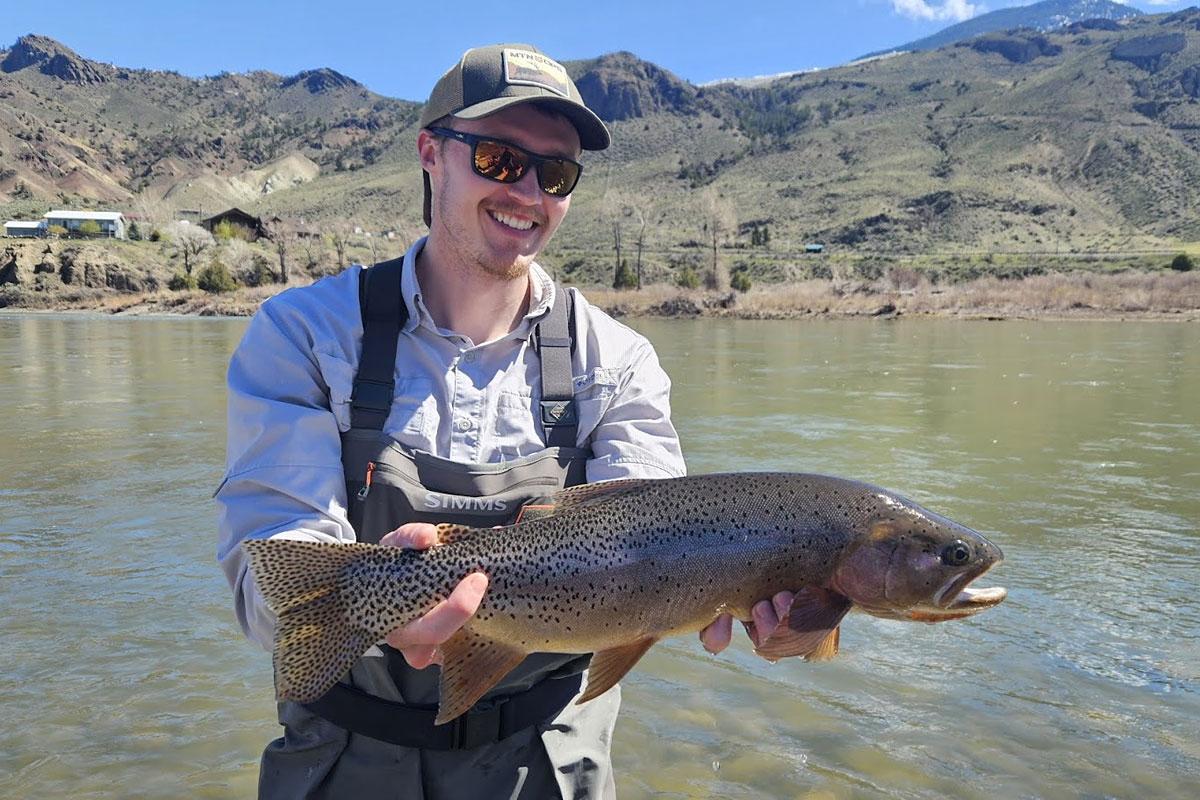By Eliz Harrison, UM News Service
MISSOULA – New research led by University of Montana graduate Colter Feuerstein underscores the critical role of genetic variation in the conservation of threatened fish species.
Published recently in the journal Conservation Letters, the study focuses on westslope cutthroat trout, offering new insights into how mixing individuals from multiple genetically distinct populations can improve the viability of reintroduced fish populations.
Feuerstein, a graduate of UM’s Wildlife Biology program, conducted this research as part of his master’s project through the W.A. Franke College of Forestry and Conservation. His study examined a conservation technique called “mixed-source reintroductions,” where fish from different populations are relocated into a new habitat.
The approach allows scientists to observe how genetic differences – meaning how varied the DNA is within a group – affect the health and success of these reintroduced populations.
The findings showed that trout with more genetic diversity were healthier and more likely to reproduce successfully. In addition, the mixing of individuals from distinct populations boosts genetic diversity and should give the reintroduced populations a better chance to persist as the environment changes.
“We found that fish with more genetic variation, including fish created by the mixture of different populations, were better at reproducing and are now thriving in new stream environments,” Feuerstein said.
His research suggests that genetic diversity plays a key role in boosting the survival rates of isolated populations of species like westslope cutthroat trout, which face pressures from habitat loss and environmental changes.
Andrew Whiteley, a UM associate professor of fisheries and conservation genomics and co-author of the study, said these findings are important for species reintroduction programs that go far beyond the focal fish species.
He said Feuerstein’s research provides a strong case for using individuals from multiple distinct populations, which each might have low genetic variation themselves, as a tool to help reintroduced populations thrive.
“Colter’s work is not only advancing our understanding of the importance of genetic variation for fish and wildlife populations but is also directly informing conservation strategies that can make a difference on the ground,” Whiteley said.
This research comes as the UM Foundation has launched the Franke College’s “Treasure Montana: Cultivating Our Tomorrow” fundraising campaign. The campaign aims to inspire $20 million in private support to construct a new state-of-the-art, 60,000-square-foot hub for environment and conservation research on campus. The effort will match $25 million committed to the project by the Montana Legislature in 2021. Learn more at TreasureMontana.org.




